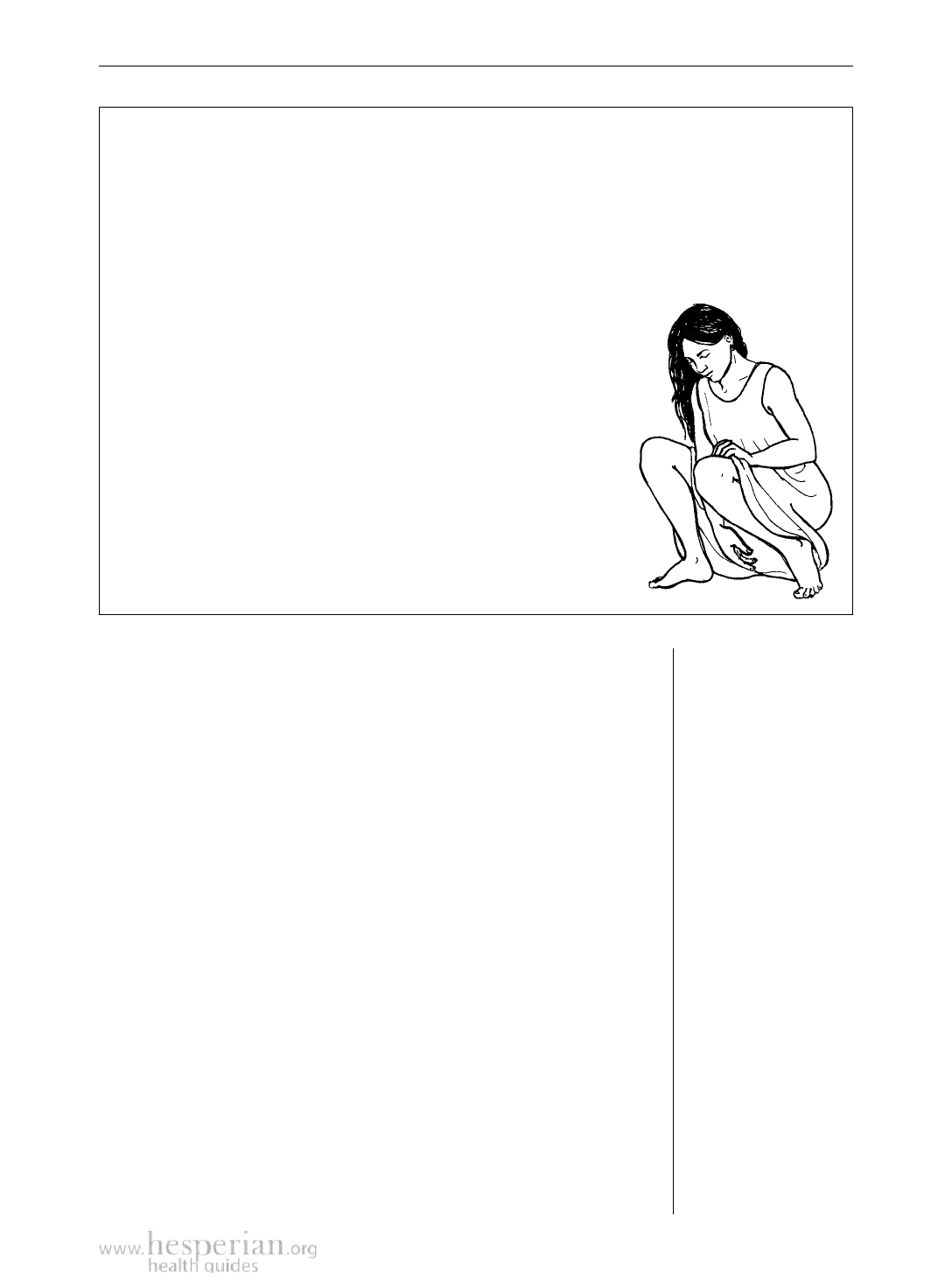
Intra-Uterine Devices for Family Planning 217
How to use the IUD:
An IUD must be inserted by a specially trained health worker after doing a pelvic
exam. The best time to have the IUD put in is during your monthly bleeding. After
childbirth, it is best to wait 6 weeks for the womb to return to its normal size and
shape before getting an IUD.
Occasionally an IUD will slip out of place. If this happens, it
will not be effective in preventing pregnancy, so it is important to
learn to check your IUD to make sure it is still in place. Most
IUDs have 2 thread-like strings attached which hang down into
the vagina. You should check the strings after each monthly
bleeding to make sure the IUD is in place.
How to check the IUD strings:
1. Wash your hands.
2. Squat down and reach as far as you can into your
vagina with your 2 fingers. Feel for the IUD strings,
but do not pull them.
3. Take out your fingers and wash your hands again.
Warning signs for problems with an IUD:
Pelvic inflammatory disease is the most serious problem
that can result from having an IUD. Most infections happen in
the first 3 months, usually because the woman already had an
infection when the IUD was put in. Or it may happen because
the health worker did not put in the IUD under clean conditions.
If you have any of the following signs, you should see a health
worker trained to insert IUDs and to treat complications, or go
to a hospital immediately:
• Your monthly bleeding is late.
• You have pain in your lower belly or pain during sex.
• You have a heavy or bad-smelling discharge from the vagina.
• You do not feel well, or have fever or chills.
• Your IUD string is missing, or is shorter or longer than usual.
• Your partner can feel the IUD (not just the strings)
during sex.
To stop using an IUD:
When you want to stop using an IUD, it must be removed
by a trained health worker. Never try to remove an IUD yourself.
You can become pregnant as soon as it has been removed.
Where Women Have No Doctor 2012